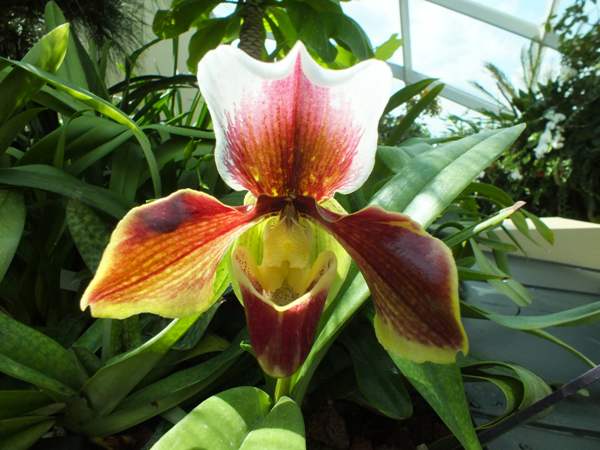Caring for your Paphiopedilum/Cypripedium orchids

Commonly referred to as Slipper Orchids, some people love these orchids but by others they are disliked and regarded as ugly things. They are relatively easy to care for and will respond well to a basic care regime despite the fact that they come from a broad range of countries, habitats and climatic conditions. These orchids grow in America, Europe and Asia. In general, it is wise to keep them in a place where the temperature will not drop below 15 degrees C and where they are not in direct sunlight.

Slipper orchids are mainly epiphytic but some also grow as terrestrials. In Europe the Lady’s Slipper Orchid is probably the best known example, although it has been driven to the brink of extinction in the UK by plant hunters. Watering once a week throughout the year is fine.
Other kinds of Orchids as House Plants...
Watering your Pahpiopedilum orchid pot plants
Since Paphiopedilums do not have the energy and moisture storing pseudobulbs that many other orchid species have (Cymbidiums, for instance), they are best kept standing in a saucer of water that is kept topped up. When re-potting it is a good idea to mix some sphagnum moss (dried packs can be bought at orchid nurseries) with the bark, as this is a good way of ensuring that the growing medium retains moisture. At the same time as watering, spray the leaves with a fine water mist. Feeding should be kept to a minimum and stepped up only once new growth or flower shoots appear. Never overdo it – food is not high on the agenda for survival of plants that live perched up in trees with their roots exposed!
What about our native wild orchids?
Yes, we have many native wild orchids throughout Europe and around 30 species in the UK. Most of them are rare, endangered or in serious decline due to the destruction of their natural habitats. They will not survive being dug up and moved either to gardens and greenhouses or to window ledges. It is also an offence under the Wildlife and Countryside Act to dig up any wild plants without the landowner’s consent.
Please Help Us: If you have found this information interesting and useful, please consider helping to keep First Nature online by making a small donation towards the web hosting and internet costs.
Any donations over and above the essential running costs will help support the conservation work of Plantlife, the Rivers Trust and charitable botanic gardens - as do author royalties and publisher proceeds from books by Pat and Sue.
Where to see wild orchids
There are many local and national nature reserves where wild orchids can be seen at the right time of year, and the network of local Wildlife Trusts can advise you on the best time to visit and also arrange for you to take part in some of the many tours that they organise during peak flowering times.


